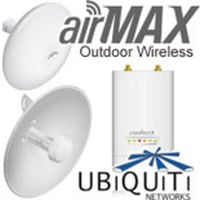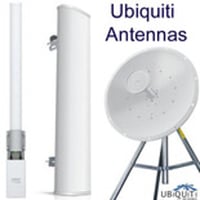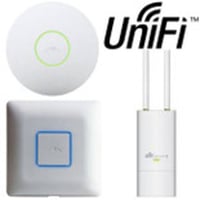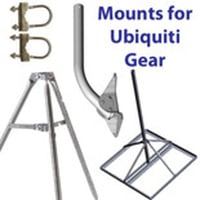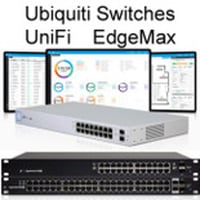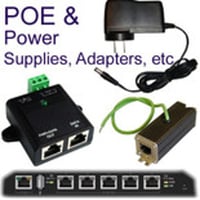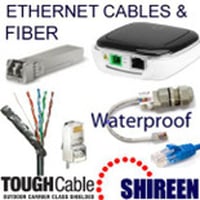POE Injectors / Adapters
Power Over Ethernet:
Power over Ethernet (PoE) is a technology that enables Ethernet cables to function as power cords, at the same time as they are functioning as Ethernet cables: DC electrical current necessary for the operation of one or more network devices flows over the same cable used for network connection. POE injectors make use of free wires in the Ethernet cable to send power.
- With PoE, one does not need power outlets at device locations, such as cameras and wireless routers.
- With fewer cables to install, the network has much greater installation flexibility, easier maintenance, lower cost, and less downtime, than with traditional wiring.
- Passive POE injectors can accept any voltage and inject that voltage into the ethernet cable, for use by the WiFi router, bridge, or CPE.
Non passive injectors are able to transfer power up to 100 meters using active components and on the other hand. The range of passive injectors is around 100-130 ft (up to 40 meters).
Power Over Ethernet: History and Deep Dive into the Technology
Old phone booths had a technology that we can consider as the ancestor of PoE technology. In old telephone booths, power was supplied over the telephone line. Although the technology and structure used are different, the concept of transmitting power over a communication line is very similar.
PoE technology is an efficient technology that made its ancestors proud and offers us the advantages of much easier use...
Power over Ethernet (PoE) injectors/adapters are a popular networking technology that has revolutionized the way power is delivered to network devices. PoE allows network devices to receive both data and power over a single Ethernet cable, eliminating the need for separate power cables and power outlets. This technology has enabled the installation and maintenance of network devices to become more efficient, cost-effective, and flexible.
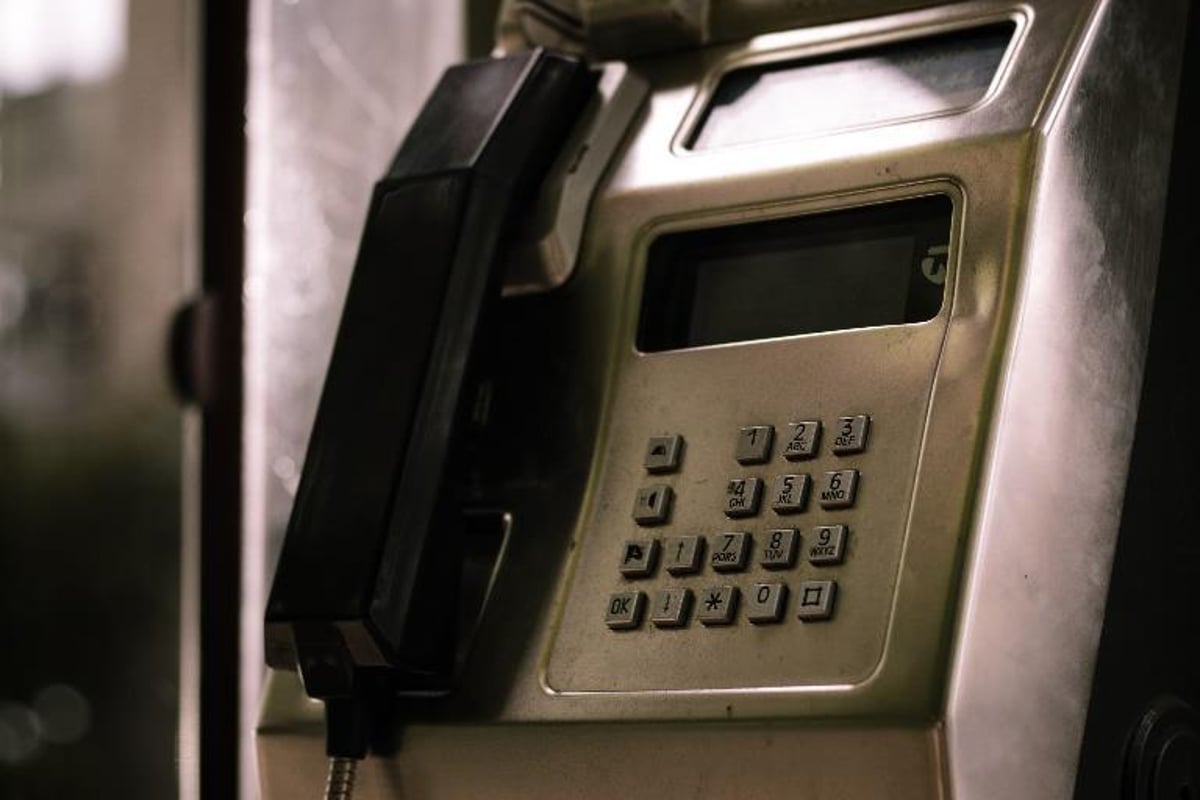
PoE technology was first introduced in 2003 with the IEEE 802.3af standard, which allowed for the delivery of up to 15.4 watts of power to network devices. Since then, the technology has evolved, and PoE+ (IEEE 802.3at) and PoE++ (IEEE 802.3bt) have been developed, allowing for the delivery of up to 90 watts of power to devices.
One of the most significant advantages of PoE technology is its ability to power devices remotely, which has made it a popular solution for network devices that are located in hard-to-reach areas. PoE technology has also made it possible to power network devices in outdoor locations, such as security cameras and wireless access points.
Another benefit of PoE technology is its scalability. With traditional power sources, adding new devices to a network can require significant electrical work and expense. With PoE technology, new devices can simply be plugged in and powered over the existing Ethernet cabling, making it easy to expand a network as needed.
Usage and Purposes
PoE technology is widely used in both residential and commercial settings. In homes, PoE is used to power network devices such as wireless access points, IP cameras, and VoIP phones. PoE is particularly useful for homes that have limited power outlets, making it easy to power devices without the need for additional wiring. PoE is also used in smart homes, allowing homeowners to control and monitor their devices remotely.
In commercial settings, PoE is used to power a wide range of network devices, including security cameras, wireless access points, and IP phones. PoE technology is particularly useful in commercial buildings, where running additional wiring and electrical outlets can be costly and disruptive. PoE technology has also made it possible to install and manage network devices in outdoor locations, such as parking lots and outdoor spaces.
PoE technology is also used in the healthcare industry, where it has enabled the deployment of medical devices and equipment that require power over Ethernet. PoE technology has made it possible to power a wide range of medical devices, including patient monitors, infusion pumps, and portable X-ray machines.
POEs w/DC Power Redundancy
Dual DC Power Inputs PoE Injectors For mission-critical devices that require maximum uptime, PoE injectors with dual DC power inputs offer redundancy in the event one power source fails. These injectors have two terminals to connect separate power supplies and will automatically draw power from the other connection to keep the PoE device operational. Products like the Ubiquiti Networks PoE-24-12W and the TP-Link TL-PoE150S offer dual DC power inputs for failover redundancy.
Power over Ethernet (PoE) Injectors and Adapters Power over Ethernet (PoE) injectors and adapters provide power and data connectivity for a wide range of PoE-enabled devices such as wireless access points, IP cameras, VoIP phones and more. With features such as dual power inputs and reset buttons, they offer reliability and ease of use. PoE injectors deliver power and data over a single Ethernet cable, eliminating the need for additional power outlets and cables, which helps reduce installation costs and provide a neat, organized setup. PoE injectors support different PoE standards (PoE, PoE+, UL listed PoE, etc.) and various power levels (15W, 30W, 60W, 95W, etc.) to match the needs of diverse PoEpowered hardware. Many also offer surge protection, high altitude support, and other features to ensure a reliable power connection. When selecting the right PoE injector, it is important to consider the power requirements and PoE standard of the device being used.
Technical Information
PoE technology works by sending power over the same Ethernet cable that is used to transmit data. The PoE injector/adapter is the device that delivers power to the network device. The PoE injector/adapter is connected to a power source, such as a wall outlet or a power strip, and the Ethernet cable is connected to the injector/adapter and the network device. From a technical standpoint, PoE injectors or adapters deliver power over the Ethernet cable in one of two ways; Mode A / Mode B
Mode A is also known as Alternative A, where the power is transmitted over the same wires as the data signals.
Mode B, also known as Alternative B, uses the spare pairs in the Ethernet cable to transmit power.
PoE injectors or adapters also come with different power ratings, ranging from 15 watts to over 90 watts, depending on the power requirements of the device being powered.
Mid-span and End-span
- Mid-span PoE injectors/adapters are used to add PoE capability to a non-PoE switch.
- End-span PoE injectors/adapters are used with PoE-enabled switches.
Mid-span PoE injectors/adapters are typically less expensive than End-span injectors/adapters and are often used in situations where an existing non-PoE switch is already in place.
A key feature of PoE technology is that it allows for remote power management. PoE switches can monitor the power usage of PoE devices and adjust the power supply accordingly. This allows for more efficient use of power and helps to reduce overall energy costs.
Additionally, PoE technology supports power management features such as scheduled power on/off and prioritization of critical devices.
At its core, PoE operates by injecting a low-voltage DC signal into the Ethernet data stream. This signal is carried over the Ethernet cabling to the PoE-enabled device, where it is separated from the data and used to power the device.
The IEEE 802.3af standard, also known as PoE Type 1, provides up to 15.4 watts of power per port, while the newer IEEE 802.3at standard, also known as PoE Type 2 or PoE+, provides up to 30 watts per port. This increased power capability allows PoE+ to support a wider range of devices, including high-power devices such as wireless access points, PTZ cameras, and video phones.
Surge Protection and Voltage Adjustment
 PoE technology also includes features such as surge protection and voltage adjustment.
PoE technology also includes features such as surge protection and voltage adjustment.
Surge protection is important for devices that are exposed to outdoor environments or other settings where they may be vulnerable to power surges or lightning strikes. PoE surge protectors are designed to protect PoE devices from voltage spikes and surges that can occur in the Ethernet cabling.
These devices typically include a surge arrester and a gas discharge tube that work together to divert excess voltage away from the PoE device and protect it from damage.
Voltage adjustment is another important feature of PoE technology. In some cases, PoE devices may require a specific voltage level to operate optimally. PoE voltage regulators can be used to adjust the voltage supplied to a device to ensure that it receives the correct level of power. This can help to prevent issues such as voltage drops, which can cause devices to malfunction or fail.
Voltage adjustment also allows for the adjustment of the voltage supplied to a device, which can help to optimize power usage and prolong the lifespan of the device.
PoE Injectors with Reset Button
PoE injectors with reset buttons provide a convenient and reliable option for setting up VoIP phones, IP cameras, wireless access points, and other PoE-enabled devices. These products deliver power and data over a single Ethernet cable, eliminating the need for extra power outlets and cables. PoE injectors support different PoE standards (PoE, PoE+, UL listed PoE, etc.) and various power levels (15W, 30W, 60W, 95W, etc.) to meet the needs of different PoE-powered hardware. Many products also offer surge protection, high altitude support, and other features to ensure a reliable power connection. When selecting the right PoE injector, it is important to consider the power requirements and PoE standard of the device being used.
Power of Ethernet is intended for WIFI or wireless routers.
The technology is unique in that it effectively converts a standard or basic wireless router into a system that is external power independent. This simply means that businesses and even some home wireless applications are not required to run a series of electrical power lines to power WIFI routers. In this way a wireless access point can be more self-sufficient and enjoy greater installation and user flexibility. This is often seen in large companies and even in big educational institutions looking for more cost effective ways of implementing an organization wide wireless network.
- A power over Ethernet-based system for wireless routers is a smart and cost conscious way of enjoying all that wireless Internet systems have to offer.
Power over Ethernet Applications & Technology
POE technology enables Ethernet cabling to transfer electrical power as well as network data to devices. This means that rather than having to install separate network and power connections and cabling a single cable can carry out both functions.
Network cables consist of several wires arranged as twisted pairs. Some of these wires are used for data transfer, but spare pairs are unused in certain types of cable. The spare pairs are used to deliver power concurrently to the data transfer. The power is injected at between 44 and 57 Volts of direct current. If this voltage is directly applied to equipment that is not PoE compatible it can damage it, therefore a PoE switch or injector is used to protect incompatible devices from the flow of current by using a low voltage signature detection process, or test of compatibility before driving current to a connected device.
PoE is advantageous because of the savings in installation and maintenance time and also the cost of the cables which also do not require installation by an electrician as they are network cables. PoE also makes installing devices like cameras much more flexible as they can be located where needed without reliance on an electrical outlet. PoE technology is also responsive to network demands and resilience against overload or underpowering. This makes it very scalable, with upgrades or expansion of networked devices being easy to install.
PoE is used for applications including:
- IP cameras and CCTV are common applications with PoE affording multiple cameras to be networked and easily repositioned when needed.
- VoIP phones are powered by PoE meaning they can be plugged into a network socket much like an analog phone.
- Wireless networks can use POE for the installation of local or wide area networks and RFID systems in remote or poorly accessible locations.
PoE for WiFi Routers
You can power your WiFi router using an AC/DC adapter. Most of them need 5 volts to 18 volts. However, the best way to power your WiFi router is through the POE (Power over Ethernet) injector. Power over the Ethernet simply means that your wireless router will be receiving power through the Ethernet cable.
Advantages of using POE for your WiFi Router include:
- Flexibility. When your power your WiFi router through the Ethernet cable, you will not be limited to the power access points. You can locate your WiFi router anywhere you want without worrying whether it’s close to a power point or not.
- It save time and cost POE will reduce the time and cost of installing electric cables that will supply your WiFi router with the power it needs. You don’t need a qualified electrician to fit Ethernet cables.
- Improves safety: POE is designed to protect your equipment from overloading and incorrect installation.
- Reliability: POE originates from a universally acceptable source that is centrally located. It can easily be backed using uninterruptible power supply as well as controlled easily.

